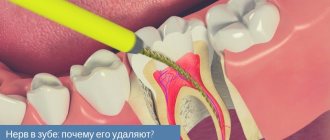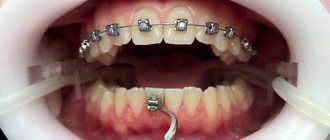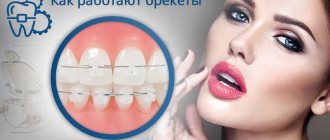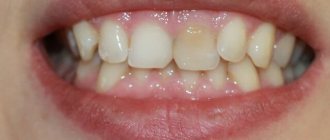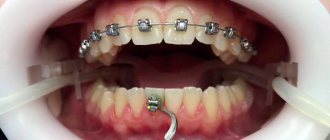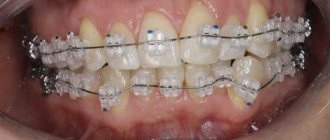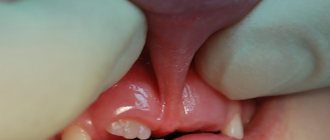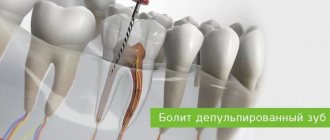Many people mistakenly believe that a tooth is a kind of solid substance consisting of one substance, and are surprised when the tooth begins to hurt. Usually nerves signal us about pain, maybe there are them in our teeth too? Indeed, in the inner part of the tooth there is a cavity that also contains nerve tissue.
So, nervous tissue is vital to perform the functions of the tooth? This, again, is a mistaken opinion. Of course, nerve tissue plays an important role in the development and growth of teeth, however, after the tooth has erupted through the gum and its maturation has completed, the only function of the dental nerve remains sensory, which is responsible for the sensitivity of the teeth.
The cavity inside the tooth containing nervous tissue is called pulp, and it is with it that such terrible names as pulpitis and depulpation are associated. What is it?
We identify the causes of toothache
The unpleasant sensations associated with caries or gum inflammation are probably familiar to many. But do teeth hurt with neuralgia? It turns out that nerve endings can also become inflamed and cause aching, shooting or paroxysmal pain. The specific location of the three branches of the trigeminal nerve contributes to the spread of pain to the lower and upper jaw, as well as the upper part of the face.
If you have toothache, inflammation of the trigeminal nerve may be the root cause of these unpleasant sensations. At home, you can only assume the presence of such a disease. The final verdict on the cause of pain is made only by the dentist.
Pulpitis is enemy number 1!
Pulpitis is an inflammation of the dental nerve, which usually occurs as a result of advanced caries.
Pulpitis can be acute or chronic. The first is characterized by severe pain, especially at night. If you do not immediately go to the dentist, then after some time acute pulpitis will go into the chronic stage, the pain will dull somewhat, and the nerve will respond only to specific stimuli, especially changes in temperature. However, there is no need to calm down in this case, since if the patient does not go to the dentist at this stage, then complications may soon arise, and pulpitis will eventually develop into periodontitis, which can threaten tooth loss.
The main symptoms of inflammation of the ternary nerve
What are the main symptoms of trigeminal nerve inflammation and tooth pain? The location of the pain and its nature will depend on which nerve endings are inflamed. If it is the lower trigeminal nerve, then discomfort will be felt in the lower jaw. With inflammation of the middle trigeminal nerve - in the upper jaw. Inflammation of the superior trigeminal nerve causes pain to spread to the upper part of the face (eyes, forehead, temples and even ears).
With neuralgia, teeth can hurt either constantly or periodically (paroxysmal pain). Unpleasant sensations can begin suddenly and end just as unexpectedly. Sometimes it can be very difficult to identify the exact location of pain.
How do teeth hurt with trigeminal neuralgia? Discomfort can manifest itself as ordinary toothache or migraine. But, characteristically, this pathology never causes edema.
How long can a tooth survive without a nerve?
A tooth without a nerve can darken and decay faster, since metabolic processes in it are not maintained at the same level. However, with proper treatment and subsequent care, such a tooth can live indefinitely. The dentist fills the canals (often under a microscope) and isolates the tooth tissue as much as possible from the influences of the external environment. This is called a sealed restoration. With modern crowns or inlays, the tooth lasts a lifetime.
Nerve removal at Russian-American Dental provides services for painless removal of the dental nerve, followed by canal filling and sealed tooth restoration. The tooth acquires an aesthetic appearance and a lifelong service life. You can make an appointment by calling Moscow +7 (499) 269-13-92 or. The clinic is located at st. Rusakovskaya, 28 (Sokolniki metro station).
How is trigeminal nerve inflammation diagnosed?
If you only feel aching pain in your teeth, then first you need to make an appointment at a dental clinic. Only a competent dentist can determine the nature of the pain, its cause and the exact source. Typically, an examination of the oral cavity is performed, followed by palpation and tapping of painful areas. To accurately verify the neuralgic nature of the disease, you will need to undergo a CT scan of the teeth (this will show the presence of inflammatory processes in the teeth and gums, and will also allow you to detect abscesses and other pathologies). You may need to consult an ENT specialist, since problems with the maxillary sinuses may also cause pain. Well, if you experience characteristic shooting pains, you should immediately contact a neurologist.
Once the presence of tertiary nerve inflammation is confirmed, the doctor decides how to treat the patient. You should not hope that the pain will go away on its own. These cases are extremely rare; moreover, it is important to determine the true cause of the discomfort and exclude other more dangerous and serious pathologies.
Contraindications for depulpation
When is it impossible to remove a dental nerve?
- stomatitis, inflammatory, purulent processes in the oral cavity;
- cardiovascular diseases;
- ARVI, sore throat, influenza;
- infectious hepatitis;
- hemorrhagic diathesis;
- acute leukemia;
- psychoemotional disorders;
- pregnancy.
Depulpation methods. How is the dental nerve removed?
Vital method
The vital depulpation method is used in adults and children - for all forms of pulpitis. This is a one-session procedure performed under local anesthesia. The dentist prepares the tooth, removes the pulp, cleans and fills the root canals, and then places a filling.
Devital method
The devital depulpation method is used to completely remove the coronal and root parts of the pulp. It differs from the vital method in the duration of treatment. An arsenic-free paste is applied to the pulp, after which a temporary filling is installed. The permanent filling is installed at your next visit to the dentist. In modern clinics, this method of treatment is used less and less.
Regardless of the method, the depulpation procedure is always carried out under anesthesia and the use of x-ray control of the tooth before and after depulpation. In 99% of cases, the vital method is used, in which complete, painless dental treatment can be completed in just one visit to the doctor.
From the history of depulpation or how were dental nerves removed before?
Depulping with arsenic is an outdated, quite painful and time-consuming method. The essence of depulpation with arsenic is that the dentist, using a dental drill, expands the root canal of the diseased tooth, opening direct access to the pulp. Then arsenic is placed in the canal and the tooth is covered with a temporary filling. Within a few days, arsenic affects the pulp, causing its death. A few days later, the patient visits the dentist again, who removes the temporary filling and removes the dead nerve from the canal. Then the dentist cleans the root canal and places a permanent filling. If the tooth continues to hurt after removing the nerve, the nerve may not have been completely removed. If pain after depulpation is caused by improper treatment and/or poor-quality canal treatment, the patient needs to visit the dentist again.
One of the main disadvantages of depulping with arsenic is its unsafety. With prolonged contact with a tooth, arsenic can lead to its complete destruction, because Arsenic is a poison, so arsenic paste was applied for a short period of time.
In modern dentistry, preference is given to safer methods of pulp removal.
Features of depulpation
Features of depulpation of baby teeth
It happens that pulpitis develops on baby teeth in children. In children, the depulpation procedure has its own characteristics:
- The minimum dosage of anesthesia is safe for the child;
- Careful opening of the crown;
- The most careful removal of the nerve ending, so as not to damage the primary processes of the molars;
- Thorough disinfection after depulpation to avoid re-inflammation;
- A filling for a baby tooth (based on mummifying compounds) – gives a disinfecting effect.
Depulpation of wisdom teeth
The difficulty of removing nerves from wisdom teeth lies in the inaccessibility of the teeth and the complexity of the structure of their canals. Therefore, if inflammatory processes occur in the pulp of wisdom teeth, it is better to remove the wisdom teeth.
Possible complications of depulpation
Complications that may arise after depulpation appear for 2 reasons:
- Anatomical features of dental canals and pulp.
- Incorrectly performed depulpation procedure.
Anatomical features of dental canals and pulp
Often the dental canals are very curved, in such cases access to the pulp can be difficult and it is difficult for the dentist to reach the nerve. In this regard, the pulp may not be completely removed, or cavities may remain in the canals.
The use of X-rays allows us to study the shape of the canals before removing the nerve and select the most appropriate instruments, which minimizes the likelihood of the above-mentioned treatment complications.
Incorrectly performed depulpation procedure
- Careless cleaning of the canals will preserve and intensify the inflammatory process due to incomplete removal of damaged tissue.
- Using an inappropriate pulp extractor channel size or improper handling of the instrument.
- Broken dental instrument, retention of its remains in the dental canal (this error may lead to the need to remove the tooth).
- Residual pulpitis occurs against the background of incompletely removed pulp.
- Perforation of root walls;
- Allergic reaction to filling material.
Poor disinfection of the canal when removing the nerve can trigger the process of suppuration. Which, in the absence of adequate treatment, can develop into a periodontal abscess. Such a complication leads to the need for tooth extraction.
Other possible complications:
Painful sensations for several days after depulpation - the duration is individual for everyone. If pain persists for a long time, it is necessary to consult a doctor to re-open the canals and carry out disinfection.
Specific problems can arise if the material is applied incorrectly: if the filling extends beyond the boundaries of the root apex, the jaw nerve may be pinched.
Recommendations
Recommendations after depulpation:
- refuse, for at least 2 hours, increased physical activity;
- rinse your mouth with antiseptics prescribed by your doctor during the day;
- hold off on eating for the first 3 hours (drink boiled, warm water through a straw);
- give up smoking and alcohol for five days, also do not take (solid, hot/cold, spicy) foods that cause irritation of the mucous membrane;
- It is forbidden to drink cold drinks, ice cream, or apply ice to the affected area.
How is inflammation of the trigeminal nerve treated?
Correct treatment for inflammation of the trigeminal nerve can only be prescribed by a neurologist. Depending on the complexity of inflammation, the following agents are included in therapy:
- Drugs to combat symptoms (pain);
- Antispasmodics and muscle relaxants of central action;
- Alcohol blockades (for severe inflammation);
- Metabolic drugs;
- Anticonvulsants (carbamazepine, finlepsin);
- B vitamins;
- Physiotherapeutic procedures.
The measures are aimed at relieving inflammation and completely eliminating pain symptoms. Properly prescribed treatment for inflammation of the trigeminal nerve can not only restore excellent health, but also prevent relapses.
This information is for informational purposes only. Only a professional specialist can prescribe treatment after examination and diagnosis.
Functions of nerves in teeth
The main function of the nerve is sensory. When bacterial damage (caries) spreads to the deep tissues of the tooth, a painful reaction occurs. Pain is the body’s signal that something is wrong and help is needed. The nerve is not located in the tooth cavity in isolation. It is part of the neurovascular bundle, a component of the dental pulp. The functions of the pulp are varied:
- tooth nutrition;
- growth and development;
- mineralization of enamel and dentin;
- immune protection.
The tooth pulp is treated and tried to be preserved in all cases where possible. It is especially important to do this in children and adolescents, since their teeth have not yet fully formed.
Why is it not necessary to remove the nerve to install crowns?
The need to remove the nerve arises primarily when the tooth is completely destroyed. It can also be dictated by the qualifications of the doctor: when heating or deeply removing the top layer, there is a risk of damage to the nerve endings, and this is very painful. That is why many dentists prefer a safer route, that is, preliminary removal of the nerve. Especially in the presence of the initial stage of caries.
In addition, depulpation can be performed in a number of cases before prosthetics: with increased sensitivity, with small sizes and in the presence of more than 15-degree inclination of the teeth. The pulp may also be removed for aesthetic reasons.
It is not necessary to perform depulpation before installing crowns, since the nerve can always be removed through the top of the crown.
After depulpation, the hole is filled. The main disadvantage of this procedure is the exposed tooth root, which can cause complications in the future.
What does tooth color change mean after pulp removal?
Nowadays, almost all private dental clinics adhere to international depulpation protocols, but outdated practices are still in use in budgetary medical institutions. The main reasons for tooth discoloration are improper preparation of the cavity for installation of a filling, poor quality of instrumentation of the canal and poor materials for filling. For example, when using endomethasone, the enamel turns yellow (a similar outcome is even prescribed in the instructions). If resorcinol-formalin paste was used for filling, the teeth may turn pink. Most often, this material is used in the treatment of baby teeth.
The nerves from wisdom teeth, which dentists call “problem eights,” are extremely rarely removed. Given their location and short service life, as well as the difficulty of cleaning from stone and plaque, they are easier to remove. As a rule, the figure eight is removed in case of incorrect eruption (if there is a slope towards the tongue or towards the cheek), tooth retention, carious lesions, pulpitis, changes in bite, displacement of the dentition.
After depulpation, you should adhere to the following recommendations:
- Avoid physical activity for the first 2 hours after the procedure.
- To avoid infection and injury to the tooth, do not eat food for 3 hours after pulp removal (you can drink warm water through a straw).
- For 5 days, exclude rough, solid foods from the diet.
- To avoid irritation of the oral mucosa, it is advisable not to smoke, drink alcoholic beverages, or eat spicy, cold or hot foods for at least 5 days.
- Rinse your mouth with antiseptics prescribed by your dentist for at least 1 day.
It is impossible to remove the dental nerve using folk remedies. Even if it can be destroyed, the pulp will need to be removed, and this can only be done with a special medical instrument.
When planning a visit to the dentist, remember that the longer you delay, the more difficult and expensive depulp removal will be. And do not forget that such intervention is recommended only if there are good reasons for it. Any dentist will try his best to keep the tooth “alive” if possible.
What diseases cause inflammation of dental canals?
Root canals can become inflamed due to the development of the following diseases:
- caries;
- pulpitis;
- periodontitis.
An accurate diagnosis of inflammation of the pulp and canals of the tooth can only be determined by a dentist after X-ray diagnostics and a visual examination of the oral cavity.
Question about pain when removing a nerve.
Usually, when it is necessary to remove a nerve, patients succumb to the fear that this is a very painful procedure. But there is no point in worrying! Each qualified specialist in his arsenal has a large number of anesthetics that desensitize the diseased tooth and surrounding tissues. Just one injection, and the person does not feel anything in the area of the diseased tooth.
Local anesthesia is most often used. If the drug is chosen correctly, the entire operation from injection to nerve extraction will be completely painless.
First aid rules for this problem
If you have a severe toothache, then the first thing that can and should be done at home is to relieve the unpleasant symptom. However, it is important to remember that this will only bring momentary relief, and after a few hours the problem will return again, perhaps with even greater force.
Let's look at what can be done.
Take painkillers and non-steroidal anti-inflammatory drugs
Use those medications that work best for you and are not contraindicated due to the characteristics of your body. The choice of over-the-counter products is large: “Ibuprofen”, “Ketanov”, “Nise”, “Spazmalgon”, “Nurofen”, “Analgin”, “Tempalgin” and others. The main thing is to use the medications according to the instructions and no more than 4-5 days in a row. Drugs from the NSAID group (non-steroidal anti-inflammatory drugs) not only eliminate severe pain, but also reduce the intensity of the inflammatory process.
Take into account the fact that with pulpitis, the analgesic effect may occur more slowly and pass faster than indicated in the instructions for the medications, or for other types of pain. And as the inflammatory process progresses, those remedies that previously brought relief will be completely ineffective.
Rinse your mouth thoroughly
First, it will reduce the amount of harmful bacteria in your mouth. Secondly, it will help to wash away pieces of food (if there are any) from the deep carious cavity, which can increase pain or even cause it. Thirdly, in this way you can reduce the intensity of pain.
Decoctions of chamomile, sage, oak bark, and oregano are best suited for rinsing. A soda-salt solution with a drop of iodine will help relieve the condition for a short time. Solutions can slightly reduce the symptoms of inflammation and have a pronounced antiseptic and regenerating effect. For more information on how to properly rinse your mouth during inflammation and pain, see the feature article on the website.
Use safe traditional recipes
Many people wonder how to numb the exposed tooth nerve. This is especially true if the previous two paragraphs of the article, with which everyone usually starts, turned out to be not so effective, which is far from uncommon with pulpitis.
You can try the following:
- apply a plantain leaf to the element of the row that is bothering you and hold for about 20 minutes,
- make an application with essential oil: tea tree, calendula, and clove oils are suitable. Before using the composition, dilute it with a few drops of water so as not to cause irritation of the mucous membranes,
- rinse your mouth with a decoction of onion peels,
- tie a piece of garlic to your wrist,
- dilute hydrogen peroxide in water, moisten cotton wool and apply to the destroyed unit,
- massage your earlobes,
- apply a cold compress externally to your cheek for 10-20 minutes: do not forget to wrap the ice in a towel so as not to cause frostbite to the tissues.
So, one of the listed methods helped, and the toothache went away. But the exposed nerve still remains, so you shouldn’t delay your visit to the dentist.
What actions at home can aggravate the problem?
If there is toothache and an exposed nerve, not everyone tries to see a doctor right away. Some resort to all sorts of pain relief methods. But here you need to know when to stop and not cause even more harm to your health. Let's consider what actions can have negative consequences:
- warming up the inflamed area: this will further increase the pain and cause inflammation to progress due to the rush of blood, as well as the spread of bacteria along with blood flow to nearby tissues,
- rinsing with hot solutions and decoctions: hot water can injure the mucous membranes and lead to exactly the same effect as warming procedures,
- applying a crushed aspirin tablet to the tooth: this drug, when applied externally, can cause severe burns and irritation of the mucous membrane,
- lotions with alcohol tinctures: similar to aspirin, they will dry out and damage the mucous membrane,
- being in a horizontal position: when the head is at the same level with the body, blood flow and pressure increase, due to which the pain only becomes stronger. To make the situation easier, on the contrary, you need to place your head higher than your body. You can use a high pillow for this.
